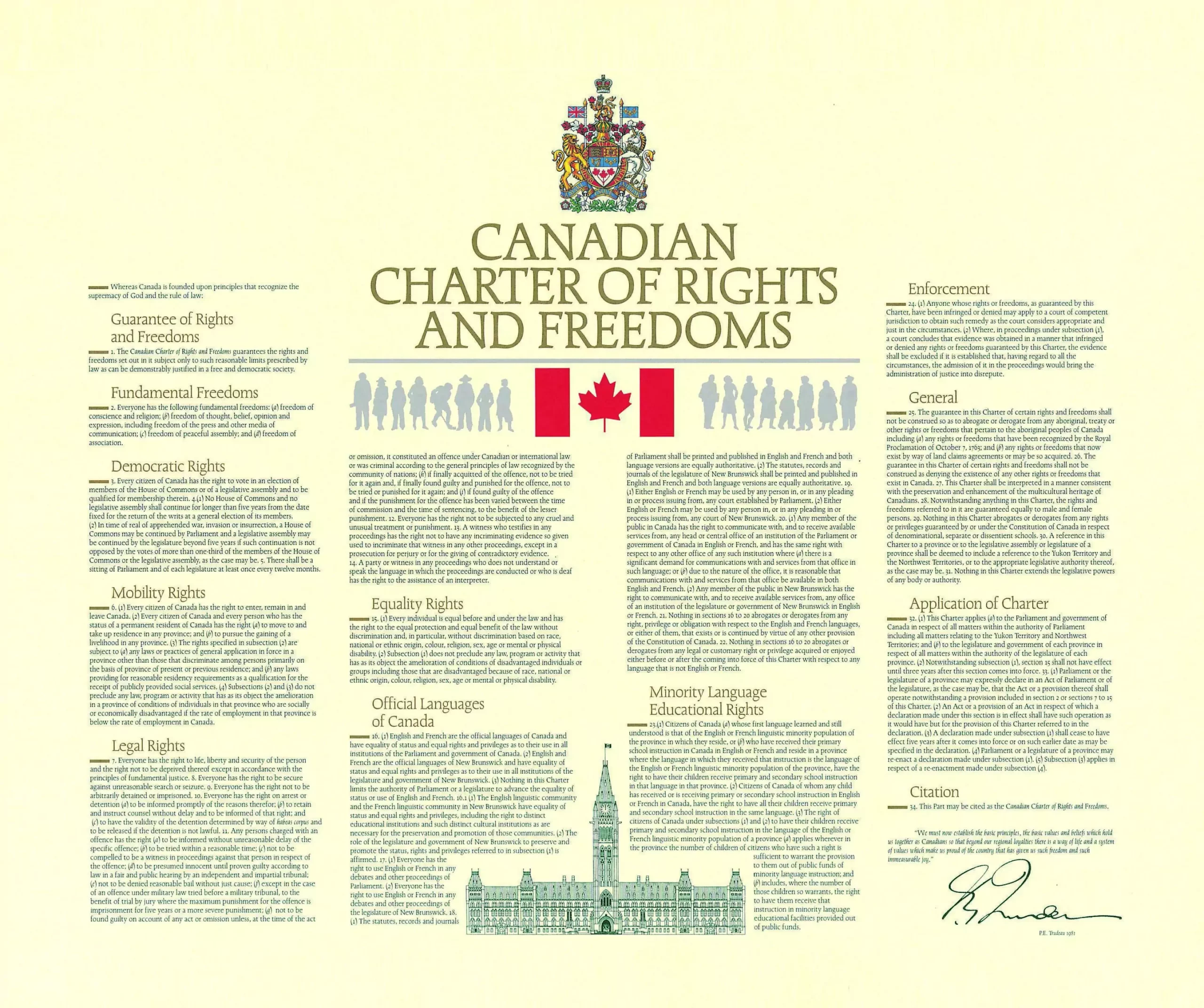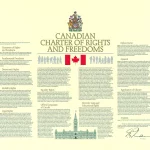The Canadian Charter of Rights and Freedoms: Sec. 1
The Canadian Charter of Rights and Freedoms, often referred to as the Charter, is a foundational document that protects and upholds the fundamental rights and freedoms of all Canadians. Enacted in 1982 as part of the Constitution Act, 1982, the Charter has played a pivotal role in shaping Canadian law and society. Central to this document is Section 1, a provision that addresses the delicate balance between individual rights and the broader interests of society. In this blog post, we will explore the significance of Section 1 and its role in maintaining equilibrium in the Canadian legal landscape.
Section 1: The Limitation Clause
Section 1 of the Charter reads as follows:
"1. The Canadian Charter of Rights and Freedoms guarantees the rights and freedoms set out in it subject only to such reasonable limits prescribed by law as can be demonstrably justified in a free and democratic society."
This seemingly straightforward clause contains a wealth of constitutional wisdom. It is often referred to as the "limitation clause" because it outlines the conditions under which the rights and freedoms guaranteed in the Charter may be subject to limitations. Let's break down the key elements of Section 1:
1. Guarantees and Reasonable Limits
Section 1 emphasizes that the Charter guarantees certain rights and freedoms. However, it acknowledges that these rights are not absolute and may be subject to limitations. The critical term here is "reasonable limits," which implies that restrictions on Charter rights must be justifiable in specific circumstances.
2. Prescribed by Law
Any limits on Charter rights must be established by law. This means that limitations cannot be arbitrary or ad-hoc but must be based on clear legal provisions that have been duly enacted.
3. Demonstrably Justified in a Free and Democratic Society
This is the crux of Section 1. It requires that any limitation on Charter rights must be demonstrably justified within the context of a free and democratic society. In other words, the government must provide compelling reasons for imposing such limits. This typically involves proving that the limitation serves a pressing and substantial objective and that it is proportional to that objective.
Balancing Individual Rights and Societal Interests
Section 1 serves a crucial purpose in Canadian law. It recognizes that while individual rights and freedoms are paramount, there are instances where the broader interests of society, such as public safety, health, or the protection of the rights of others, may necessitate limitations on those rights. This provision ensures that decisions to limit Charter rights are not taken lightly and that they are subject to rigorous scrutiny by the courts.
Challenges and Controversies
Section 1 has been the subject of numerous legal challenges and controversies over the years. Courts must carefully assess the government's justifications for limiting Charter rights, and the outcome of such cases can have far-reaching implications for Canadian society.
Section 1 of the Canadian Charter of Rights and Freedoms is a testament to Canada's commitment to balancing individual rights with the broader interests of society. It embodies the principle that no right is absolute and that limitations must meet a high standard of justification. In doing so, Section 1 ensures that the Charter remains a living document capable of adapting to the evolving needs of a dynamic and diverse nation. As Canada continues to navigate complex legal and societal issues, Section 1 will remain a cornerstone of its commitment to democracy, justice, and the rule of law.

